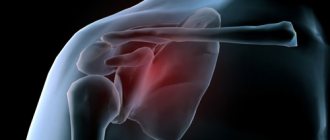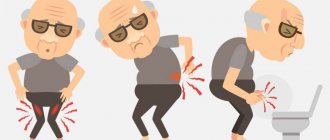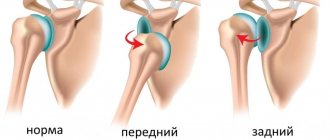UHF therapy is a therapeutic method that is used to treat many serious diseases. It is based on the use of electromagnetic fields characterized by ultra-high frequencies. The heat resulting from such exposure penetrates into organs and functional tissues.
To perform UHF therapy, special equipment is used. The technique is allowed to be used even if the patient’s history includes recent fractures, gynecological problems or acute infectious pathologies. The latter circumstance is the main advantage, since most physiotherapy procedures cannot be performed in this case.
The popularity of UHF therapy in medicine is due to its high efficiency, safety, minimal number of restrictions and accessibility. Thanks to this method:
- the structure of functional tissues changes;
- thermal energy is generated.
Biological fluids and internal organs, penetrated by a large number of blood vessels, conduct electric current well. Vibrating particles at a certain frequency causes them to be quickly absorbed. As a result, thermal energy is accumulated.
Bone, nervous, connective and adipose tissues have much less conductivity. In this case there are no ohmic losses. After using the device, molecules are formed that can change their orientation with respect to the poles. The result of this is the occurrence of a bias current. The existing losses are called dielectric.
Ultrahigh-frequency exposure is one of the most popular physiotherapeutic procedures among patients. UHF therapy can be performed both in the clinic and at home. The latter became possible after the creation of portable equipment. UHF therapy is most often carried out in combination with other physiotherapy and drug treatment. With transcerebral UHF therapy, the zone of influence becomes the brain.
Indications
UHF therapy was developed about 20 years ago. Initially, it was used only to treat diseases of the musculoskeletal system. Subsequently, pathological changes localized in the area of the digestive, circulatory and respiratory systems were considered direct indications for UHF therapy. They must be treated in full accordance with the therapeutic regimen prescribed for the patient.
Significant reasons for prescribing UHF therapy are:
- chronic diseases (bronchitis, sinusitis);
- inflammatory diseases accompanied by purulent complications;
- trophic ulcers, furunculosis, purulent wounds, panaritium;
- disruptions in the reproductive system (in women and men).
This list is supplemented by neuralgia, menopause, myalgia, myositis, radiculitis and osteochondrosis. High frequency therapy may be prescribed if a person has suffered due to a mechanical injury.
UHF therapy reduces the likelihood of developing negative consequences resulting from fractures, dislocations or sprains. UHF therapy is often done during the rehabilitation period after surgery (appendicitis removal).
Magnetophoresis
The method allows drugs to be delivered to the affected area using a low-frequency magnetic field.
The procedures provide a combined effect of a magnetic field and medications, which achieves vasoactive (improved microcirculation), anti-inflammatory, trophic, analgesic, and hypocoagulant effects. The effect is carried out through closed eyelids, with the application of medicinal substances to the eyelids or their introduction into the conjunctival sac.
Magnetophoresis is prescribed for:
- Endocrine ophthalmopathy.
- Conjunctivitis, episcleritis, keratitis.
- Epithelial-endothelial dystrophies of the cornea.
- Dry eye syndrome.
- Iridocyclitis.
- Edematous forms of diseases of the retina and choroid.
Contraindications
Despite its relative safety, UHF therapy is not prescribed to everyone. This physiotherapeutic technique cannot be included in the general complex if the following factors are present:
- Malignant and benign neoplasms.
- Poor blood clotting.
- Congenital diseases (heart defects).
- Pregnancy.
- Lactation period.
- Thyrotoxicosis.
- Acute vasculitis, leukemia, lymphoma, hemophilia, thrombophilia.
- Damage to the skin in the area to be treated.
- Injuries caused by thermal exposure.
- Hyperthermia (high body temperature).
- Hypotension (persistent decrease in blood pressure).
- Heart failure (acute, chronic).
- Myocardial infarction.
Ultrahigh-frequency therapy is not performed if the patient has metal implants (crowns, pacemaker). In any case, self-medication is strictly prohibited. UHF therapy should be prescribed by the attending physician according to direct indications. It is recommended to carry out the procedure in a hospital setting. A physiotherapist prescribes a referral for UHF. At the same time, he must take into account the patient’s contraindications.
Goals of the methodology
Thanks to ultra-high-frequency therapy, a noticeable improvement in the patient’s well-being can be achieved. With the help of UHF therapy it is effective to:
- Accelerate the process of restoration of damaged tissues.
- Relieves swelling and spasms.
- Normalize blood circulation.
- Eliminate pain syndrome.
- Strengthen the immune system.
- Destroy harmful microflora.
- Strengthen the proliferative activity of the connective tissue apparatus.
- Improves metabolic metabolism at the cellular level.
- Stops foci of inflammation.
- Stabilize the state of the central nervous system.
Magnetotherapy
This treatment method is carried out using alternating and intermittent permanent magnetic fields.
Magnetic therapy provides anti-inflammatory, analgesic, and anti-edematous effects. The procedures help improve trophism, stimulate tissue regeneration, improve microcirculation, and promote rapid epithelization of ulcerative surfaces.
The main advantage of magnetic therapy is remote exposure without eye contact with the inductor.
Treatment is prescribed for:
- Diseases of the eyelids (hordeolum, blepharitis).
- Keratitis and iridocyclitis of various etiologies.
- Postoperative complications.
- Keratoconus.
- Retinal dystrophies.
- Myopia and accommodation disorders.
- Ischemic conditions of the retina.
- Optic nerve atrophy.
- Hemorrhages in the eye.
- Edema exophthalmos.
Necessary equipment
Special equipment is used to carry out UHF therapy. This is a device that consists of emitters, a generator, inductors and electrodes. The equipment can be stationary or portable. Stationary equipment is installed in medical institutions, in rooms intended for physiotherapeutic procedures. Portable equipment can be purchased for performing therapy at home.
When purchasing equipment, they usually focus on the principle of operation and power. Taking into account the last indicator, there are three types of equipment power for UHF therapy:
- small (less than 30 W);
- medium (from 30 to 80 W);
- large (from 80 to 350 W).
During UHF therapy, electromagnetic radiation reaches the affected area without loss. If the equipment of the mechanism is used correctly, the risk of burns for the patient is minimal.
How is the procedure performed?
The algorithm of action is the same. At the first stage, the device is configured for UHF therapy. The range of electromagnetic vibrations is selected based on the patient’s diagnosis and individual characteristics. UHF equipment manufactured in the Russian Federation operates at 40.68 Hz.
Devices manufactured abroad are used by setting the frequency at 27.12 Hz. It is also necessary to decide on the type of low-intensity vibrations. Electromagnetic influence can be carried out in a continuous or impulsive manner.
While the specialist adjusts the equipment, the patient takes the appropriate position. He can sit or lie down. It depends on which area of the body will be exposed to radiation.
Then the doctor will attach the plate elements to the desired places on the patient’s body. A gauze or cloth napkin is placed between them and the skin directly. Ignoring the doctor’s recommendations and the instructions listed in the instructions can result in a burn.
The duration of one session of UHF therapy does not exceed 15 minutes. To achieve improvement, it will take from 5 to 20 procedures. The duration of the treatment course is determined individually for each patient by the doctor. The furniture in the physiotherapy room should be wooden.
Are there any negative effects
Ultrahigh-frequency therapy increases the permeability of vascular walls. The risk of developing negative consequences for the patient is minimal. Side effects most often occur when performing UHF therapy at home. Not all patients know by what rules this technique works. They are at risk of harm when using a portable UHF therapy machine.
Possible damage to the body includes:
- thermal skin damage;
- bleeding (warming tissue increases the likelihood of complications after surgery);
- the appearance of scars;
- electric shock.
A course of UHF therapy can be completed at any clinic in Moscow. The price of one session depends on its duration and the equipment used.
Electrotherapy
Electrotherapy involves exposure to electric currents: low voltage (electrophoresis, galvanization), periodic low voltage currents (diadynamic therapy, electrical stimulation), high voltage electric fields (UHF therapy) and alternating magnetic fields (low frequency magnetotherapy).
Electrophoresis
The drug electrophoresis method is the most common in ophthalmology. It is a variant of the physicochemical combination of exposure to direct electric current and aqueous solutions of drugs.
When applying the method, galvanic reactions occur with the formation of heat and a change in the pH of the environment, a redistribution of ions in the cellular substance occurs, and the formation and activation of biochemically active substances occurs. Such reactions stimulate local blood circulation and the resorption capacity of tissues, activate metabolic and trophic processes and the secretory function of the glands, and increase the permeability of the blood-ophthalmic barrier.
The use of electrophoresis is effective for acute inflammatory and degenerative eye diseases and chronic pathologies:
- Scar changes in the eyelids.
- Barley.
- Phlegmon.
- Chalazion.
- Keratitis, iridocyclitis, episcleritis.
- Cloudiness of ST.
- Adhesions, hemophthalmos.
- Chorioretinitis, chorioretinal degenerations.
- Macular degeneration, various retinopathy.
- Neuritis and atrophy of the optic nerve.
Diadynamophoresis
The method ensures the introduction of the required doses of medication into the affected area through direct current pulses with a frequency of 50/100 Hz. Under the influence of diadynamic currents, sensitive nerve endings are blocked, and trophic and metabolic processes are stimulated. This promotes rapid resorption of edema, hemorrhages and opacities of the vitreous body.
Diadynamophoresis is prescribed for:
- Keratitis of various etiologies, with pain syndrome;
- Dystrophic processes of the cornea;
- Episcleritis and acute iridocyclitis;
- Paresis of the extraocular muscles.
Electrical stimulation
The therapeutic effect of electrical stimulation is to activate the processes of tissue regeneration and repair. As a result, the functions of those structures that retained their viability during a decrease in the conductivity of nerve impulses are restored. Electrical stimulation is prescribed for damage to the neuroreceptors of the eye and reflex arc:
- Optic nerve atrophy.
- Myopia.
- Retinal dystrophy.
- Amblyopia of various types in children.
- Neurogenic keratitis.
- Compensated primary open-angle glaucoma.
Contraindications for electrical stimulation of the eyes. Electrical stimulation procedures are not prescribed for:
- Oncological neoplasms;
- Diseases of the blood and blood-forming organs;
- Epilepsy;
- Infectious diseases in acute form, febrile states;
- Chronic infectious diseases (tuberculosis, brucellosis, etc.);
- Stage III hypertension;
- Diseases of internal organs in the stage of decompensation.
In addition, contraindications to electrical stimulation are:
- Tearing.
- Fresh hemorrhages or risk of recurrence.
- Decompensated glaucoma.
- Metallic foreign bodies in the internal media of the eye.
Electroreflexotherapy
This is the effect on acupuncture points of the human body by certain physical factors.
Acupuncture points are zones with a high concentration of nerve endings, through which it is possible to carry out therapeutic effects on the body with physical stimuli (laser, phono, electro, magnetopuncture, etc.).
Electroreflexotherapy is prescribed for:
- Amblyopia.
- Spasm of accommodation and progressive myopia.
- Cataracts, glaucoma.
- Dystrophic processes in the retina and optic nerve.
UHF therapy
Treatment with this method involves exposing the organ of vision to a continuous and pulsed electric field of ultra-high frequency.
With such an effect, vibrations of ions of the same frequency, polarization of dielectric particles and rotation of dipole molecules occur with heating of tissues and the formation of intracellular heat.
UHF therapy is indicated for:
- Dacryocystitis.
- Barley.
- Phlegmon of the lacrimal sac.
- Keratitis and uveitis.











